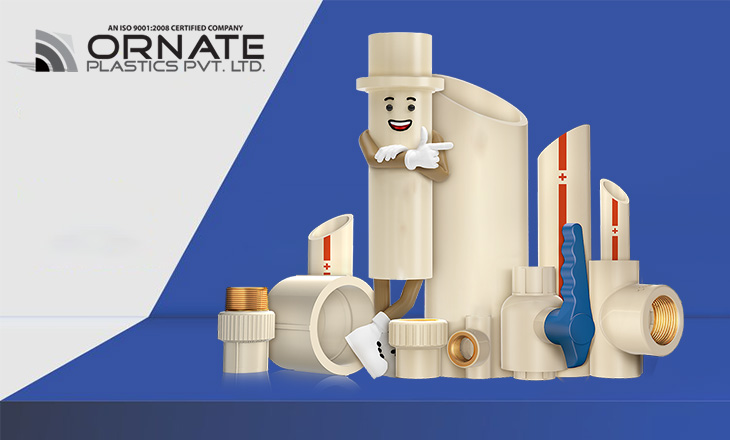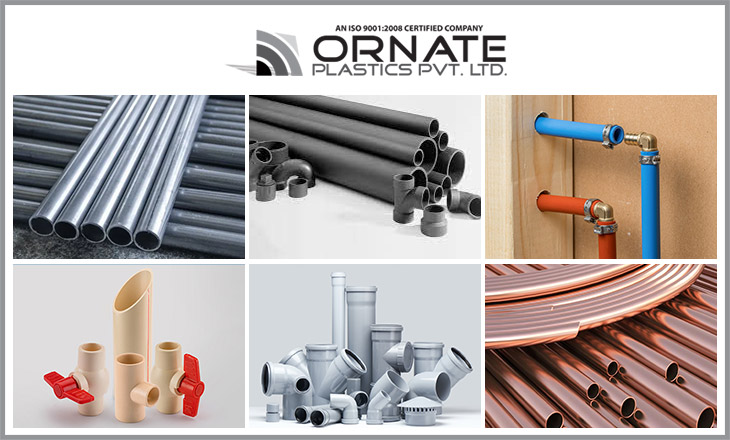


The third-most generally accepted synthetic polymer, PVC, is produced and practiced at the rate of 40 million tons a year worldwide. Its central application is as a channel for water in different contexts.
What is composed of, which gives it a universally sought-after product? The raw material utilized is polyvinyl chloride, whose number of beneficial physical and chemical properties make it the ideal choice for a safe and cost-effective channel in a spectrum of infrastructure applications, the main being water supply.
PVC stands for polyvinyl chloride. It is a chlorinated hydrocarbon polymer. In its original state, it is hard and breakable. But when mixed with additives such as plasticizers, it converts more flexible and malleable.
Its purposes are electrical insulation, medicinal tubing, flooring, fittings, signage, and rubber substitute. But its different popular use is in the production of pipes used in water supply, plumbing, and irrigation.
Depending on the PVC pipe advantages, a few options of PVC pipes are done as hot or cold water channels in industrial and business contexts. Pvc pipe exporters have been using PVC for over 80 years for different industrial purposes.
PVC pipes are used in several piping applications, from the transportation of drinking water over sewerage solutions to advanced fire-sprinkler systems. This reputation owes a single combination of safety, environmental performance, durability/cost-efficiency, and recyclability.
PVC pipes are a reliable option for the transportation of drinking water. This is owed to their high degree of inertness and opposition to corrosion. PVC pipes are therefore escaped from the bio-film infection that can be a breeding ground for bacteria. By supporting provide clean water, PVC pipe benefits public health.
Throughout the VinylPlus® framework, the European PVC and piping business has targeted to change unpopular things. As a result, the replacement of lead-based stabilizers in apparent PVC compounds was built in 2015. Because it is practiced below its glass transformation temperature (80°C), PVC can be deemed a functional block is preventing any low molecular density substances from moving to drinking water. Movement tests have shown migration levels far below the discovery limit of the most modern analytical methods.
The first PVC piping methods were established over 80 years, and most are still in use. The average lifespan of a PVC pipe is 100 years or more for buried pipes. Moreover, PVC piping methods show a much deeper failure rate than other elements. When seen over their whole lifetime, PVC pipes are also the most cost-efficient option compared with other piping elements. This involves the costs to purchase pipes, install, manage and control and dismantle the pipeline. Year stability and low total cost of control mean monopolies can safely prefer PVC for their piping infrastructure.
PVC pipes have distinct environmental advantages over old materials. As PVC is a cheap carbon plastic, PVC pipes need less energy and fewer supplies to manufacture. Due to their less weight, low power is used when transported. PVC pipes serve long with a shadow of preservation, and they are readily recyclable. Many modern PVC pipes include recycles, for example, three-layer lines where the center layer is made of recycled PVC. Moreover, the ultra-smooth covering of PVC pipes decreases pumping costs and energy usage, and their leak-free fittings reduce water loss. This is good for both the environment and the service bill.
PVC pipes are readily recyclable and can be recycled many times without spending their technical characteristics. Each year around 80,000 weights of PVC pipes are recovered in Europe through the VinylPlus® programme. This recyclate is used to create new pipes and a mixture of other PVC products. Traceability and certification systems for recycles ensure a high degree of security and quality for recycled PVC.
Using recycled PVC maintains meet resource-efficiency targets and supports the preservation of natural resources. For each kg of PVC recycled, 2 kilograms of CO2 are saved. On this evidence, CO2 savings from PVC recycling in Europe is presently at more than 1.5 million tonnes of CO2 saved per year, with a total of 13 million weights since 2000. Further, recycled PVC’s primary energy demand is up to 90% lower than virgin PVC production. PVC recycling also produces green jobs – the 730,000 weights recycled in Europe in 2020 through VinylPlus® contributed to creating more than 1,500 direct jobs in recycling plants.
Copyright © 2021 ORNATE Plastics pvt.ltd. All rights reserved.






